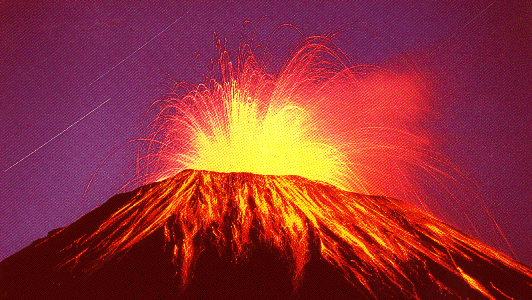 A volcano erupted in the south of Iceland overnight, forcing hundreds of people to evacuate the area and diverting flights after authorities declared a state of emergency, officials said on Sunday.
A volcano erupted in the south of Iceland overnight, forcing hundreds of people to evacuate the area and diverting flights after authorities declared a state of emergency, officials said on Sunday.
Shortly before midnight, the Eyjafjallajokull glacier, the island’s fifth largest, started to spew smoke and lava from several craters along a rift which is popular with hikers.
Police sent rescue teams to evacuate about 500 people living in the rural area near the site. No injuries or damage to property were reported. Three Red Cross care centres were opened in nearby villages to assist the evacuated population.
“The evacuations have gone smoothly,” said local police chief Kjartan Thorkelsson, adding there was no indication the volcano presented any immediate danger to people.
The volcano spewed lava and threw up a plume of smoke about one kilometer high. There was little threat of flooding unless the eruption grew in scope and began to melt large amounts of ice on the glacier, police said.
Flights to and from Iceland were canceled due to the risk that clouds of ash could interfere with navigation, with flights from the U.S. cities of Orlando and Seattle diverted to Boston until later in the day.
Some 1,300 travelers were stranded in airports in Iceland and abroad, the Civil Authority said, adding all flights were expected to start taking off later in the day.
Police said the main road on Iceland’s southern coast had reopened after being closed for several hours due to the eruption. Farmers were allowed to return home to tend to their animals.
Scientists said further volcanic activity could be imminent as three previous eruptions at Eyjafjallajokull had all triggered eruptions at Mt Katla, a powerful volcano to the east of the glacier.
“What we know is that an eruption in Eyjafjallajokull seems to be a trigger for Mt Katla,” geophysicist Pall Einarsson said on Icelandic state television.
An eruption at Mt Katla would be a far larger and more serious event, Einarsson said, as lava could melt the ice at the top of the mountain, setting off massive flooding.
Mt Katla, which usually blows every half century, has not erupted since 1918, he added.
NO WARNING
Iceland sits on a volcanic hotspot in the Mid-Atlantic Ridge and has relatively frequent eruptions, although most occur in sparsely populated areas and pose little danger to people or property. The last eruption took place in 2004.
Scientists had been monitoring the Eyjafjallajokull glacier, dormant since 1821, for signs of seismic activity but said there had been little warning of an eruption on Saturday.
There have been 21 eruptions in Iceland since 1963, but the only one in recent history to cause any serious damage took place in 1973 in the Westmann islands and caused no casualties.
At a news conference, geophysicist Magnus Tumi Gudmundsson said there was no way to predict how long the Eyjafjallajokull eruption could last.
“It could end tomorrow, it could go on for a year or two, but this is a small eruption,” he said. Reuters

Leave a Reply
You must be logged in to post a comment.